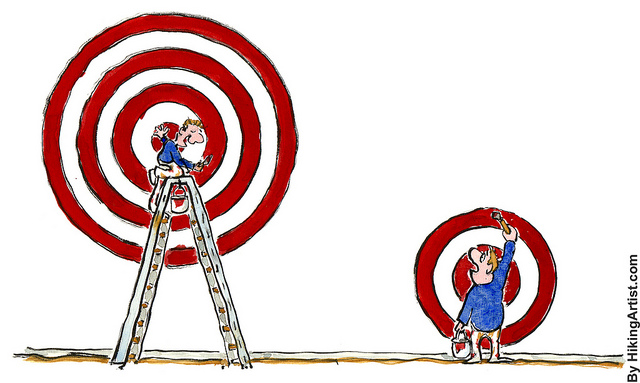26 March 2017 | Articles, Articles 2017, Marketing | By Christophe Lachnitt
Is Digital Advertising Really Better Than Traditional Advertising?
Behind that provocative question is an increasingly unpleasant reality for advertisers.
The conventional wisdom is that the targeting and measurement capabilities offered by digital advertising deliver unprecedented cost-effectiveness. The problem is that that assumption is so much taken for granted that it becomes counterproductive or even dangerous.
The latest example of the perils that it brings is the placement of advertisements of major brands (Chrysler, Honda, HSBC, L’Oreal…) and British public entities (e.g. Home Office, Royal Navy, Royal Air Force) next to YouTube videos promoting rape, anti-semitism, homophobia, white supremacism, nazism or ISIS.
Said advertisers were not aware of the degrading content along which their ads were placed. It must be noted that 400 hours of video are uploaded on YouTube every minute, or 65 years of video a day. It is difficult, not to say impossible in the current operating model, to ensure the consistency of advertisers’ messages with such a volume of free-flowing content. Incidentally, content control issues are comparable on Google and Facebook, as illustrated by the fake news phenomenon.
Several hundreds of advertisers had recently decided not to broadcast their campaigns on some alt-right websites (e.g. Breitbart). The merit, if I may say so, of those outlets is to openly present their ideology. On the contrary, the dominant digital platforms (e.g. Facebook, Google/YouTube) today make it impossible to separate the wheat from the tares in the content they distribute. Therefore, they are paradoxically more dangerous.

Those targeting deficiencies aren’t the only weakness of the digital advertising ecosystem: It isn’t always as cost-effective as one might expect.
A study conducted by The&Partnership and m/SIX across more than 100 billion digital ad impressions reveals that nearly 20 percent of global investments in digital advertising was wasted on fraudulent advertising placements last year. The two main drivers of invalid traffic are adware and botnet fraud. This year, advertisers could lose more than 16 billion dollars to ad fraud.
That study also confirms that, as I explained on Superception a year ago, programmatic advertising is particularly affected by ad fraud: 29 percent of the 27 billion dollars invested in programmatic advertising was invalid traffic last year. Still, programmatic advertising spending keeps growing faster than most other digital advertising formats.
While digital advertising is meant to optimize the return on marketing investment, it sometimes look as if the conundrum made famous by department store pioneer John Wanamaker were applicable to it: “Half the money I spend on advertising is wasted. The trouble is, I don’t know which half.”
The third major problem posed by the current digital advertising ecosystem is the domination of the duopoly of Facebook and Google. While digital is expected to surpass television for the first time as the biggest advertising category in the U.S. this year, the companies led by Mark Zuckerberg and Larry Page capture more than 60 percent of that market and account for all of its growth.
The existence of that duopoly is beneficial to the public and advertisers neither economically nor socially nor morally. In that regard, one can only hope that its competitors, first and foremost Amazon and Snapchat, will find ways to challenge it more seriously.
Facing that triple problem of targeting, cost-effectiveness and duopoly, advertisers and agencies should question their technology-focused strategy, which heavily relies on automation, and take a more artisanal approach based on the human verification of the added value of their campaigns. By doing so, they would leverage the key advantage of traditional advertising: It places audiences at the heart of everything it does.


